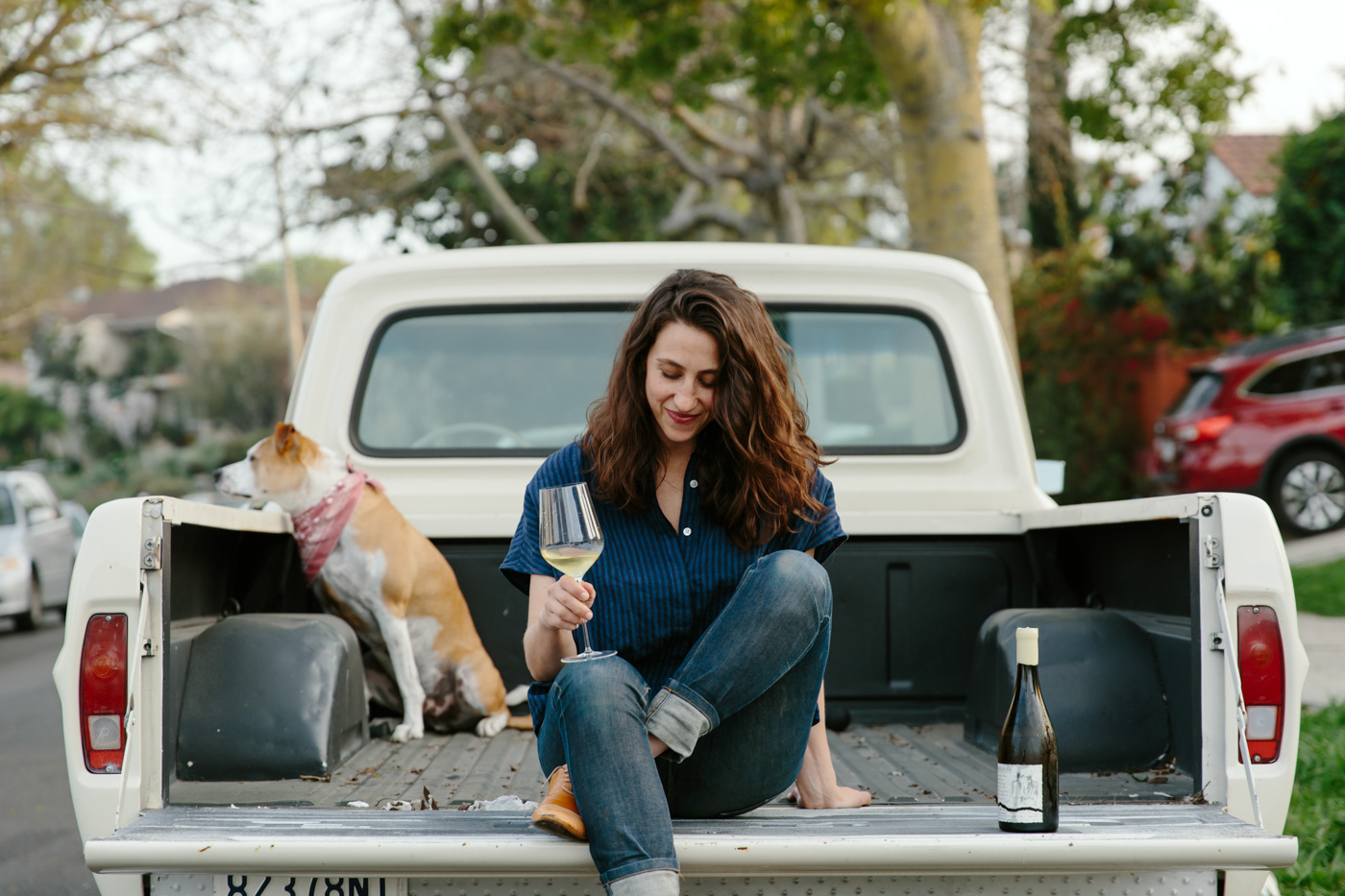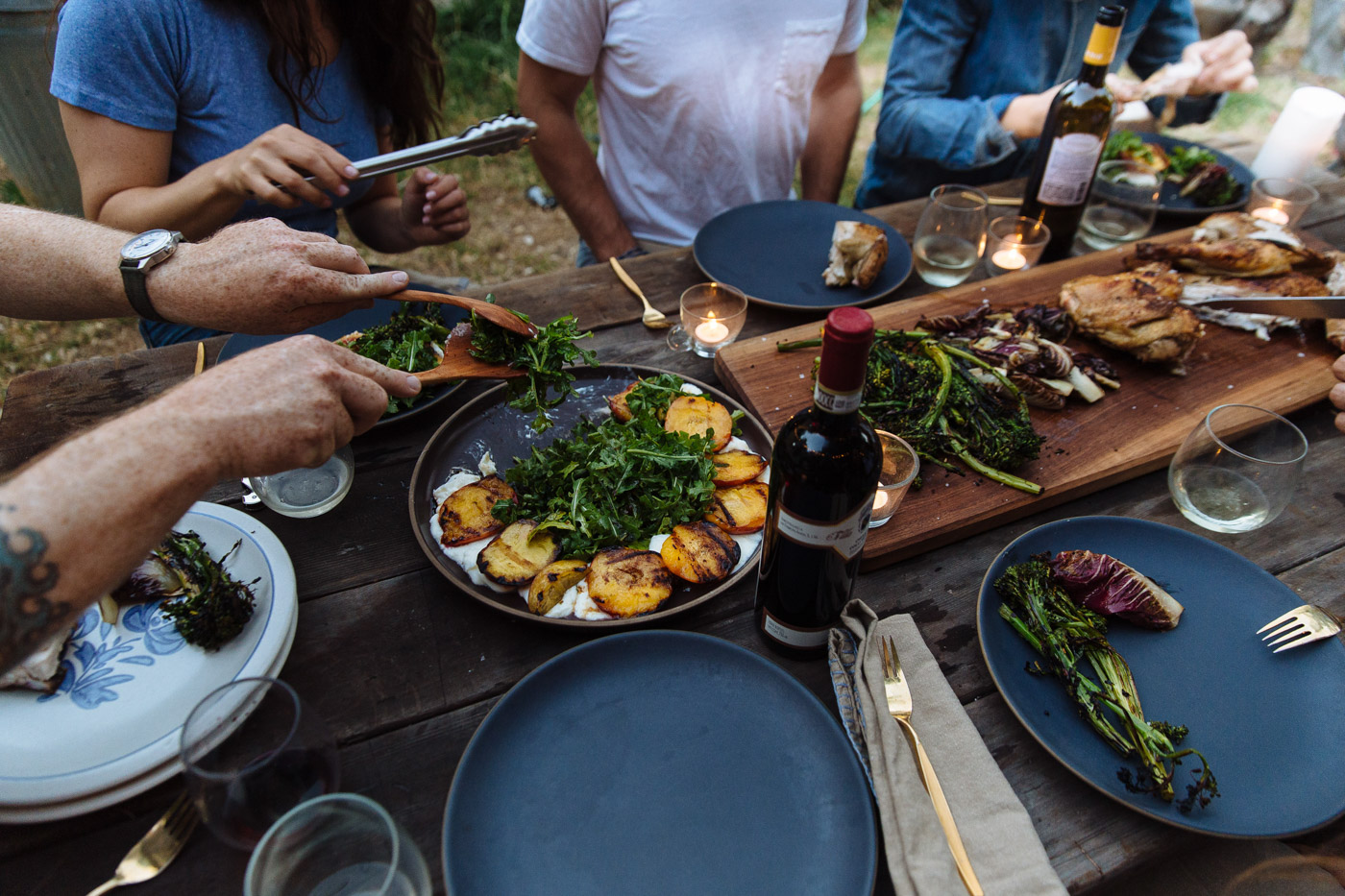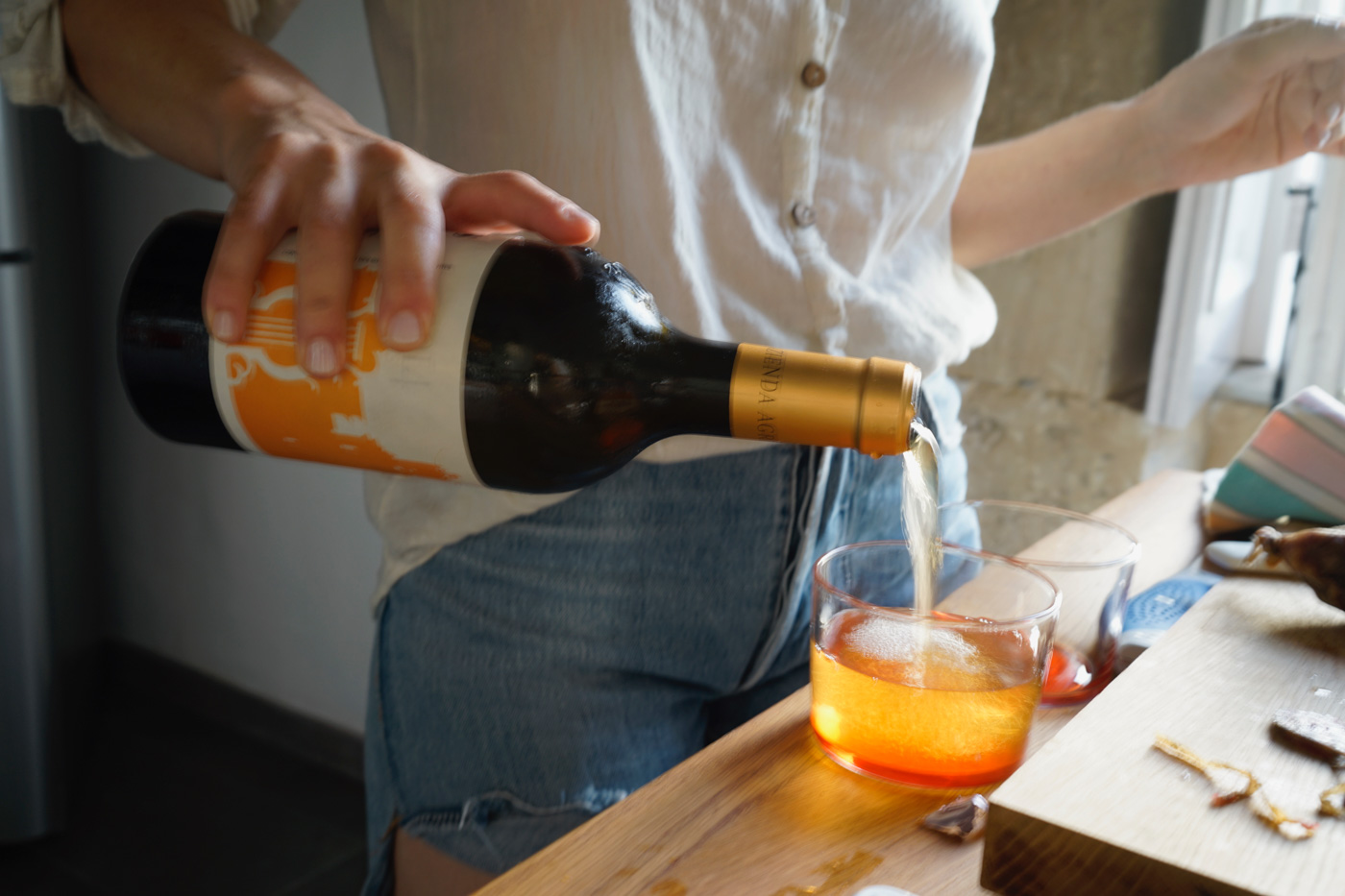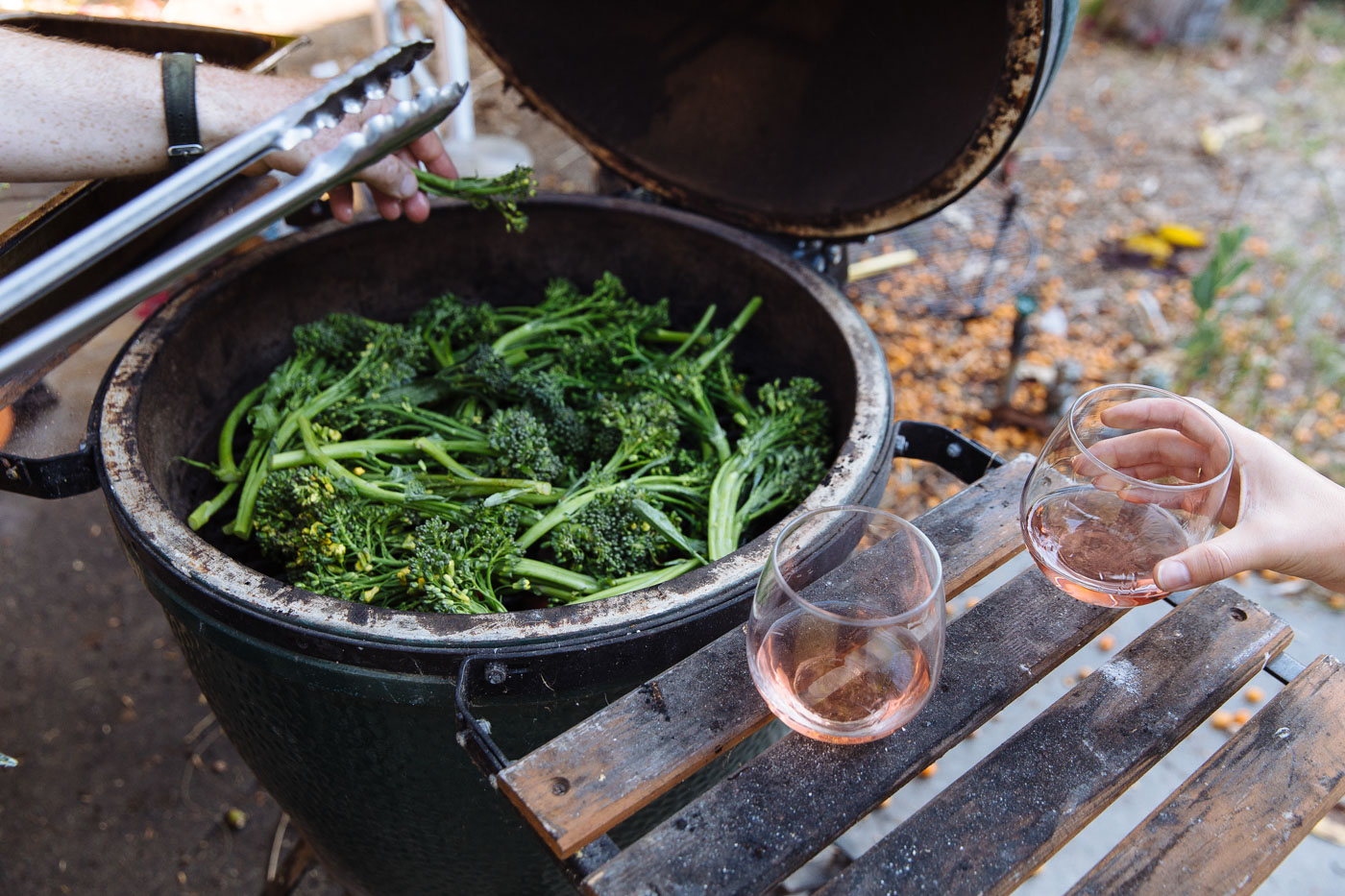Let’s get real. The best things in life—music, food, travel—would be intolerable if enjoying them required extensive expertise. You and your best friend aren’t arguing over whether “Where Is My Mind” is played in A minor or C sharp, because you’re too busy sobbing and trying to figure out WTF just happened in Fight Club. And I’m telling you, wine is no exception.
I can tell you that with confidence because I’ve spent the better part of a decade running some of Los Angeles’ most elite wine programs, launching my own wine e-shop, and professionally sourcing, tasting and relationship-building with the world’s best producers and importers.
My work in restaurants ingrained in me the notion that wine is a gesture of hospitality. Cooking is about feeding people, and wine follows suit; it’s about keeping glasses full. Pouring wine for someone is a generous act and the quickest way to make someone feel comfortable in your dining room, be it at home or in a public space. It’s also my favorite way to welcome a person and open up conversation: Have you tried this Blaufränkisch? It’s grown by a guy who is rebelling against the government in Austria! For all its overly complicated confines, wine is glorious, bottomless, liquid hospitality, and the easiest way to surprise and delight.

Learning wine is all about curiosity. Any chef I’ve worked for will tell you I’ve got no problem reaching across party lines (i.e. front-of-house/back-of-house borders) to drag my baguette through pooling rotisserie drippings, or dip a finger in the pastry chef’s just-forming cake batter, just to have a taste. That same curiosity led me down the winding path of wine.
Like anything that requires a little risk—oysters, stinky cheeses, roller coasters (please, not all at once)—the only way to get familiar with something is to take the ride and explore. Wine has been over-intellectualized and codified by the elite. But pleasure isn’t dependent on information or prestige. And although it can be intimidating and confusing, at its core, wine is made for pleasure.
What I’m offering here isn’t a matrix for complicated pairings, and it’s not a cheat sheet for five key varietals to memorize. I’m not lining up the hottest new wines trends either. But if you prefer falling in love over acing tests, this guide to enjoying a most sophisticated beverage made from a humble fruit is made for you.


You don’t know it all, and you don’t have to. Wine is vast. Don’t expect to understand all of it—or even most of it. But the beauty is that without a verifiable starting point or finish line, there’s no finite destination. Sure, people have invested in climbing the ranks in wine academia, and blind-tasting burgundy is a cool party trick, but that’s a skill that exists in a vacuum (with questionable payoff). The inability to read sheet music doesn’t inhibit you from loving a song. And just like good music can make you feel energized, happy, contemplative, romantic—so too can wine. You just have to let it sing. So drink with curiosity and an open mind rather than approaching with a goal.
Use regular words. Yes! You can face a wine list with unpronounceable words and labels in foreign languages. I mean, who skips out on Thai food because they can’t pronounce gaeng keow wan kai? Ask your wine steward/barman/woman/sommelier/shopkeep for something you’re interested in tasting. Use words like rare or unconventional, savory, light, fruity, smoky. If you can describe what kind of salsa you like, your vocabulary is sufficient.
Be a kid! Often, the folks lamenting the challenges of accumulating wine knowledge are the same ones raving about the pastel de nata they had in Portugal or the romanesco dish they whipped up from the Ottolenghi book. We’re all eating with an eagerness, interest and a willingness to have an adventure over another chicken sandwich. Let’s add some whimsy to wine! Seven-year-olds don’t feel self-conscious about tasting 10 flavors and then choosing their favorite, nor do they get hung up on the technical process of ice cream making. They revel in it. You can be a fourth grader again, except now you have the benefit of being the legal drinking age.

Producers before varietals. Forget trying to memorize complicated AOCs (legally-designated grape neighborhoods), or even the grapes themselves. The people who make the wine are the most important part of the equation. Saying you like syrah is like saying you enjoy meat. But when you discover Robert Michel’s syrah from Northern Rhone in Cornas, well now you’re after a bone-in, dry-aged ribeye med-rare. Grapes come from all over and also in many forms; identifying producers you love indicates more about your preferences and will help inform what to try next. I strongly recommend—heck, I insist—you opt for hands-on, grower-producers, not wine made by big companies. If you can’t tell where the grapes were grown and by whom, find another bottle.
Find a pusher. Not someone pushing an agenda, but someone who knows their stuff. They’ll tell you more about producer’s process and share his or her stories, which are far more compelling and relatable than the ones featuring soil type as a main character. Wine has a genuinely nerdy side, and nerds are enthusiastic about sharing a good discovery. Seek those people out at a local shop, a restaurant or online, and ask those nerds for the stories!
You don’t have to break the bank. Forget triple-digit price tags. Classics like heavy hitters from Burgundy and Bordeaux have their place, but many of the best have become prohibitively expensive. Lesser-known producers and regions offer great value, and there’s never been more delicious, affordable wine available. Look for familiar varietals from unfamiliar places (pinot noir from the Loire Valley or Jura), or try something totally unheard of: jacquiere from Savoie, amigne from Switzerland. If you’ve never heard of it, chances are in your favor that wine is made in much smaller quantity. Wine made in tiny batches is most likely done so with great care and by hand—attention to you can often taste.
But you do have to open your wallet a little. Don’t go for the cheapest on the shelf or list and then complain when it tastes like a flat can of old Squirt. If you can pony up for grass-fed meat or beautiful farmers market produce, you can toss a few more clams at a good bottle of wine. And you deserve it! You work hard, you shouldn’t suffer through vino that was on rollback at the grocery store (also, number 7.5: Don’t buy wine at the grocery store).

Have another round. Get to know a wine by buying a few bottles of the same bottle from the same producer. Drink it for a few meals. Open it with different foods, different people, different settings. You’ll notice variations and create context and impressions that last longer and dig a little deeper. For example, “This wine is tart,” will become “I loved that pinot noir with the roasted chicken. It tasted like red berries and reminded me of the Fourth of July.”
86 quizzes & lists. “Six Wine Hacks to Survive the Holidays,” is a cute concept, but you won’t find the tools or experiences you need to really fall in love with wine. I don’t care how cleverly knit an algorithm is; no one can determine your wine preferences based on your television viewing or chocolate-consuming predilections.
It’s all about context. Put as much thought into who and what you’re drinking a wine with as you do in selecting the wine itself—maybe even more. The food, the people, the conversation, the dirty jokes—those are the things that make a bottle memorable. When you drink that wine again, the scents and flavors bring the very best of a night’s memories back into focus. Wine should be the excuse to invite people over and cook a meal (or just order in) and drink communally. Passing wine around the table should be as natural as circulating the brussels sprouts or homemade guacamole.
Write your own story, and take it personally. Maybe you grew up on a farm and the smell of wet hay in the morning is burned into your limbic brain; maybe you’ve never smelled guava and would double-you-tee-eff me if I called a wine tropical. Your own sensory memories impart themselves onto your experience of wine, and your mom’s home cooking was probably different than my mom’s (unless she too made you lots of pizza bagels). And I love that aspect of taste; it’s so personal. This is something you sense, not think, and when you find those connections they leave impressions on you in the most meaningful of ways, deepening your connection to both the wine and the very people with whom you’re sharing the bottle.

Take it from those who make it. I’ve spent plenty of time with winemakers. I know this is hard to believe, but they don’t go around sticking their faces in piles of dirty laundry or snatching up handfuls of grass to memorize olfactory components. They’re often humble farmers and are the first to admit that nature, like life, is unpredictable and grander than anything we can hold accountable to rules. The best winemakers are also some of my favorite people, and they have a deep curiosity about life, food, relationships, nature, music and community. They’ve found a way to live and make a living that plunges them deep into their philosophy of the world every day because they love it, not because it’s high society. The only way to capture this ethos as a wine drinker is to submit to the newness of it, wipe away your preconceptions, and be present every time you try something. Then, you can begin to experience the romance and surreal beauty of wine as pleasure, not science.
——
Ashley Ragovin has launched and managed wine programs for some of Los Angeles’ best restaurants including Animal, Trois Mec, Osteria Mozza, Scopa Italian Roots and more. She is currently the founder of Pour This, a monthly wine club.







Our comments section is for members only.
Join today to gain exclusive access.